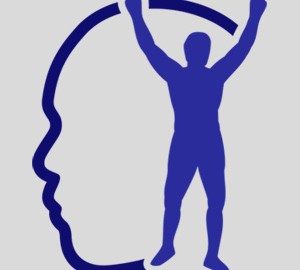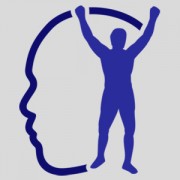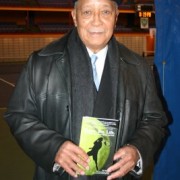MESSAGE #571 IMAGINE…
Today’s message is especially dedicated to the great Myles Smythers in Fort Lauderdale, Florida.
Many of you enjoyed yesterday’s blog message on willpower and the highlights from Dr. Sam Wang’s talk on the brain for the Princeton Regional Chamber of Commerce. During his talk, I became more intrigued by the brain and how it relates to performance. I had a nice conversation with Dr. Wang afterwards and he recommended I get a book called, “The Body Has A Mind Of Its Own” by Sandra Blakeslee and Matthew Blakeslee. I bought the book last night and immediately dove into it.
The title of today’s message is IMAGINE, but it’s not about the John Lennon song.
I think the biggest difference between normal athletes and elite athletes is that the elite athletes use imagery or visualization in their training. In my own experience, I visualize many times a day, especially if I am about to do something important. It helps me be less nervous and perform at a higher level. For example, before I give a talk, I visualize myself being a bit nervous, but then, acting confident and performing at a high level. I try to involve as many senses as I can – I try to see the room, smell what the room may smell like, hear sounds that may be present, feel the temperature, etc. Then, when it actually happens, it feels familiar.
In “The Body Has A Mind Of Its Own,” the authors talk about this type of imagery and visualization…
“Imagining Versus Doing”
“Anybody who likes watching sports can see that certain athletes appear to mentally rehearse what they are about to do…before they get going, they prime themselves.” (Pascual-Leone)
Many famous musicians do the same thing.
A violinist who spent seven years in prison and practiced playing in his mind every day gave a flawless performance the night he got out of jail.
When you mentally rehearse a movement, all but one of the brain regions that control your movements become active in the absence of movement. You imagine throwing the dart but your body is immobile. You imagine pressing the piano key but your muscles are still. So motor imagery is the off-line operation of your brain’s motor machinery unfolding as if it were happening in real time. It takes you about as long to imagine walking across your bedroom as it would if you actually did the walk. Such a walk takes longer if you imagine yourself carrying a heavy box. If you imagine yourself running, your breathing speeds up and your heart rate increases. If you imagine moving your little finger for ten minutes a day, after four weeks it will be up to one-fifth stronger.
Another interesting finding was that “…the level of performance after five days of motor imagery was equivalent to three days of physical practice. But when he added one day of physical practice to five days of motor imagery, his subjects were as good as those who practiced only physically for five full days. This means motor imagery can give you a distinct advantage in your training. You can get better with less rather than more physical practice. And it’s gentler on the knees.”
So that’s what we’re talking about.
IMAGINE your potential.
Thanks for reading.







Leave a Reply
Want to join the discussion?Feel free to contribute!